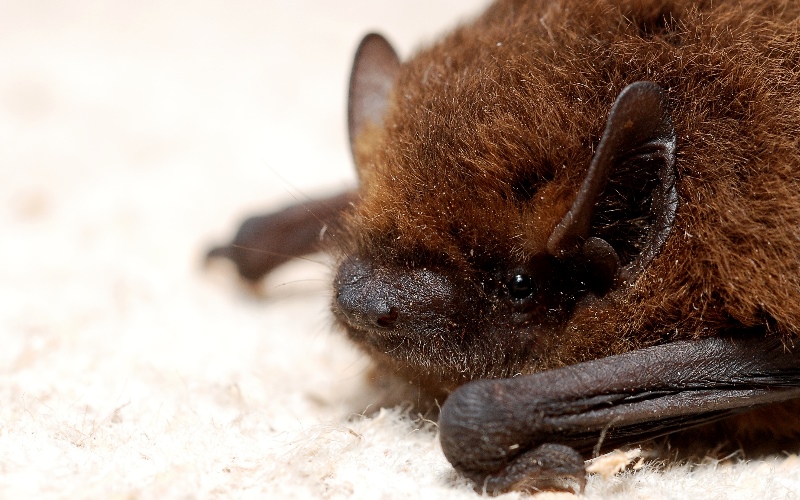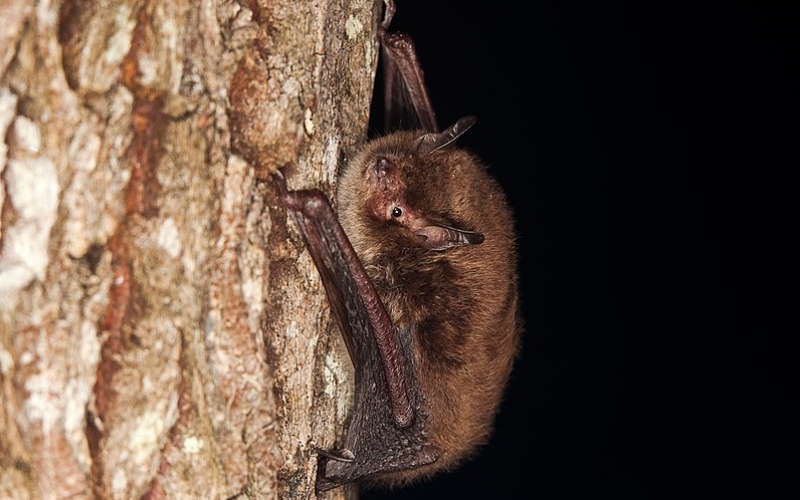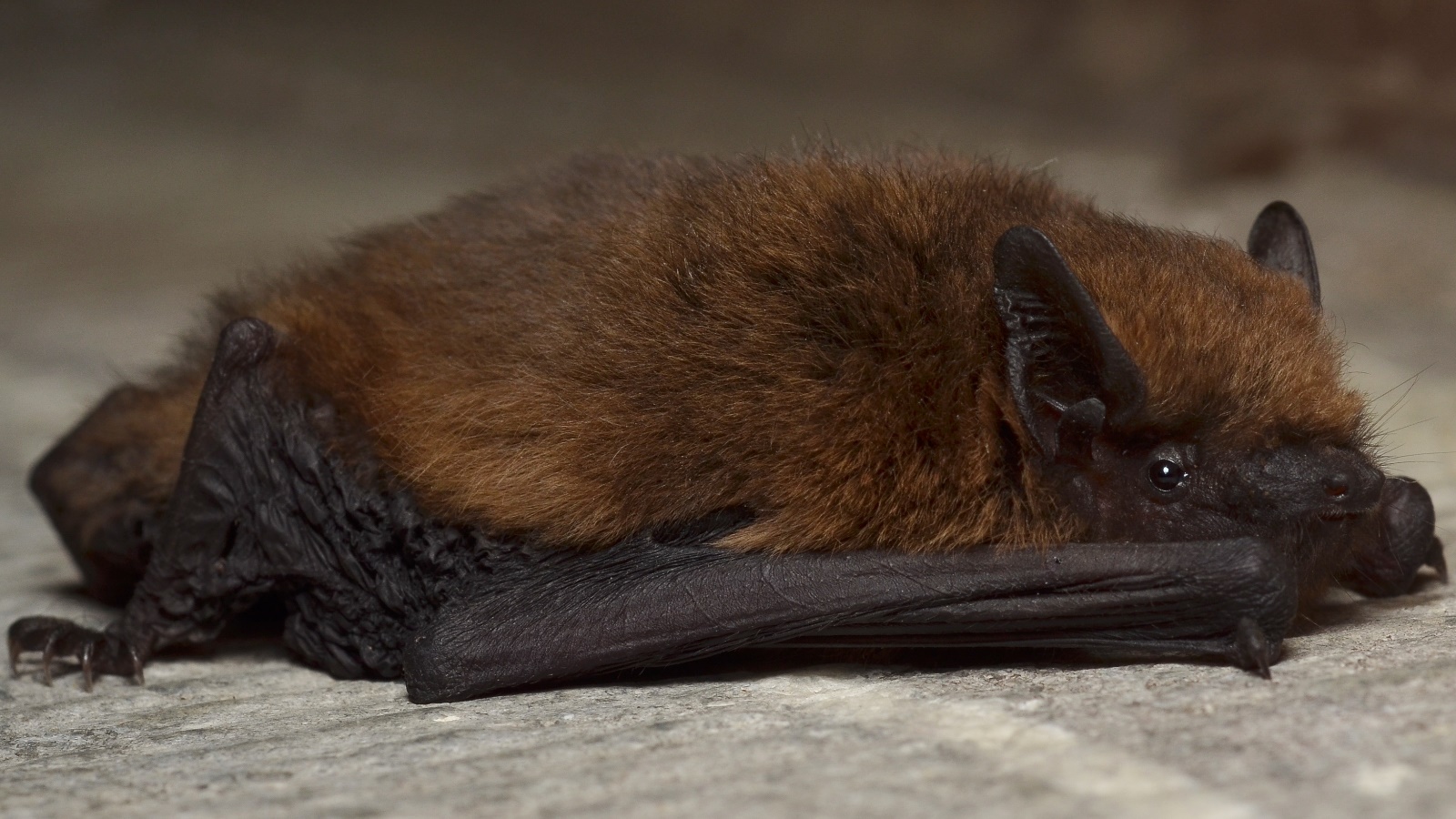How to contribute to bat conservation
Gardens for wildlife
If we are in the street at the end of the day and raise our eyes to the sky, when there is still a little light left on the horizon, we may be surprised by some tiny silhouettes flying around erratically, especially if we are near a lamp or in a wooded area. These are probably bats, explains Jorge Palmeirim, researcher and associate professor at the Faculty of Science of the University of Lisbon and a specialist in these mammals that form the order of the Chiroptera.
27 species of this group are known in Portugal, some quite common in urban environments such as the common pipistrelle (Pipistrellus pipistrellus) and Daubenton’s bat (Myotis daubentonii), both of which were observed in the Gulbenkian Garden during a visit guided by this researcher on 5 June.
The small common pipistrelle is easier to observe at dusk because it feeds mostly on ‘small bugs that have their peak activity’ at that time, notes Jorge Palmeirim, who highlights the ‘extreme importance’ of this and other bat species insofar as ‘they eat enormous quantities of insects’, capturing ‘an insect every 15 to 20 seconds’.
In the case of a bat weighing five grams, like the common pipistrelle, it can eat half its weight in a single night. ‘A thousand of these bats, for example, consume 2.5 kilos per night, which is a huge amount if we’re talking about small flying insects.’
In Lisbon, there are many thousands of these bats, but also many others, such as Daubenton’s bat, the serotine bat (Eptesicus serotinus), the common bent-wing bat (Miniopterus schreibersii), various species of greater horseshoe bat (Rhinolophus sp.), and even the European free-tailed bat (Tadarida teniotis), ‘which flies well above tree level and behaves quite differently’ from the others.
People living in rural areas will also come into contact with various other bats, principally species that feed on nocturnal butterflies. ‘Every night, the bats of Portugal eat several tons of insects that are potential agricultural pests, and in whose control they play a very important role’, the biologist stresses.

Unique capabilities
These animals have other unique characteristics, such as the ability to orientate themselves in the dark using the echoes they produce, interacting with the environment in a ‘completely different’ way to us. This is because they have ‘a kind of radar or extremely sophisticated sonar, which allows them to avoid obstacles and also to find and capture prey, even underneath other objects.’
Equally fascinating is their longevity, with ‘a little bat weighing four or five grams able to live for more than 30 years’, a characteristic that sets them apart from other small mammals, as is the fact that they only produce a single offspring per year. ‘This works well as a life strategy, which we can appreciate in the great number of bat species that exist around the world, over 1400 in total, thus making up a very important proportion of mammals’, underlines the university professor.
The problem, he stresses, is when the actions of humans needlessly lead to their mortality. In these situations, ‘populations tend to fall rapidly and then have great difficulty in recovering, because the reproduction rate is very slow’, which makes bats one of the most threatened groups in the world, including in Portugal. This is the case of the lesser mouse-eared bat (Myotis blythii), which ‘has been declining very rapidly due to unknown causes’, and the Mediterranean horseshoe bat (Rhinolophus euryale).
The common pipistrelle, meanwhile, is ‘highly adaptable’ and ‘manages to take advantage of the humanisation of the landscape’, sheltering in cracks in building façades, in the spaces between buildings, or under roof tiles. Even so, it is not completely safe, as there are people who continue to kill bats of this and other species due to ‘unfounded fears and myths’, criticises the researcher.

How to help, both in the city and in the countryside
But how can each of us contribute to improving bat conservation? These flying mammals require a very large habitat area, explains Jorge Palmeirim. Even the common pipistrelles, for example, travel several square kilometres every day between their roosts and their feeding grounds, limiting what a single person can do.
Even so, there are some important things we can all do, starting with the need for well-wooded gardens, as ‘plants feed insects, which in turn feed the bats’. In the same way, the maintenance of lakes or ponds is ‘very positive’ for these mammals.
The efficacy of installing artificial shelters, meanwhile, depends on the site chosen. These shelters tend to be used by so-called fissure-roosting bats such as the common pipistrelles and the serotine bat, which use cracks to shelter in. ‘In a city there are so many spaces available for these animals to roost, so it’s quite likely that an artificial shelter will never get occupied.’ Still, that possibility increases in larger urban gardens, particularly if they have lakes or ponds.
In contrast, ‘artificial shelters are most useful in agricultural areas with few trees or in industrial forest areas, such as pine and eucalyptus forests, where there are very few old trees and therefore no shelters,’ he notes. In areas with more balanced ecosystems, these shelters are not recommended because they could favour some species of bats to the detriment of others with a more tenuous conservation status.
For those who live in the countryside, Jorge Palmeirim leaves us with two further suggestions: to use fewer pesticides and simply learn to tolerate these mammals, which are ‘relatively common’ in rural areas. While there are those who fear the presence of these animals and complain about dirty walls, ‘the important thing is tolerance, remembering that these bats are contributing to reducing the number of mosquitoes during the night, around the house, and the intensity of pests in the vegetable garden.’
Gardens for wildlife
Throughout the year, the Gulbenkian Garden is promoting a series of visits focused on how to make our gardens, parks and land, both inside and outside cities, more welcoming for wildlife – fundamental for life on Earth! Wilder magazine follows these visits and publishes articles on each of the different topis covered in partnership with the Gulbenkian Foundation.

